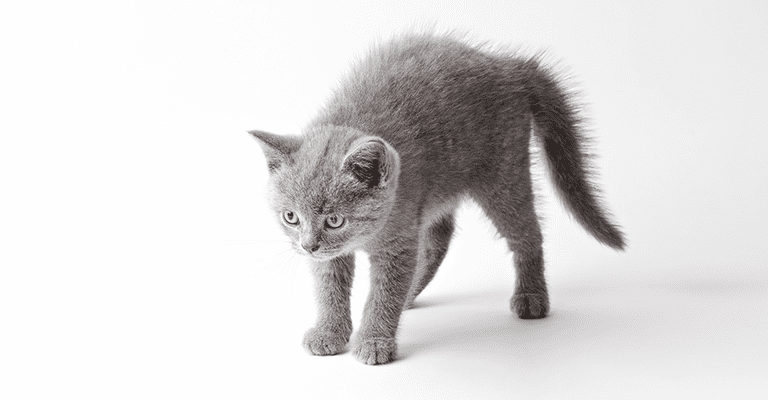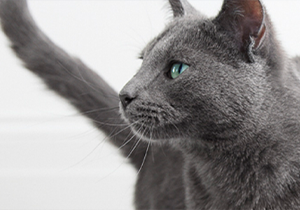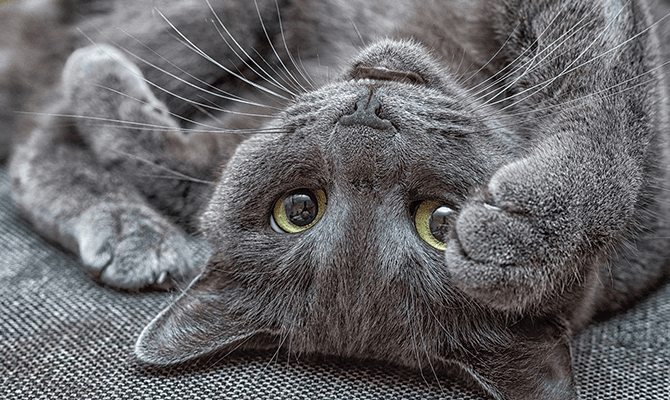Understanding Cat Tail Language
Cats, our fabulously royal feline friends, are often mistaken for being shy, introverted creatures who prefer their own company. However, while cats value their personal space, they are the biggest extroverts around their favourite humans! They engage in meaningful communication with their humans all the time.
You might be surprised to know that cats have a plethora of languages in their arsenal. Do you know that cats developed their trademarked ‘meow’ sound just to communicate with humans? Other than meowing, you must have noticed your cat tail wagging playfully on different occasions. Most cats use their tail as an infallible tool to express their moods and feelings, creating a language that is widely accepted in the feline community. But that doesn’t mean you should feel left out! By observing the tail of your cat, you will understand your furry friend a lot better and grasp the meaning of cat tail movement.
Meaning of Cat Tail Movements
As intelligent as cats are, they can express a wide range of emotions depending on the posture and movement of their tail. Some of the most common movements and meaning a cat's tail carries are:
-
Raised Tail

In addition to a cat tail wagging, holding the tail high is generally understood as a sign of happiness in the feline community. Most cats also use a raised tail as a way of greeting fellow cats or their humans. So, if you see your kitty run towards you with its tail held high, it is nothing but the most cheerful greeting it can muster. Cats also hold up their tail as a sign of confidence while marking their territory, and a little twitch on an erect tail might indicate extreme happiness.
-
Bent like a question mark

Cats playing with a ball of yarn is undoubtedly one of the most adorable sights. And you will most probably see your cat with its tail curved like a question mark during these play times. It is possibly the most obvious sign that your little kitty is in a playful mood and would like you to bring out some toys and have some fun with them.
-
Keeping the tail down
It is not uncommon to see your furry munchkin keep its tail down in unfamiliar environments. Keeping the tail down indicates a serious tone. It is also a sign of aggression. So, if your cat has lowered its tail, watch out, for it is quite literally preparing for fighting tooth and nail! You can help your cat by immediately removing it from the stressful situation, or giving it some personal space to feel secure.
-
Hiding the tail
Unlike being a sign of aggression, tucking away or hiding its tail is often considered a sign of fear or submission. Cats can be seen to have their tail tucked away when they are navigating an unfamiliar environment so as to appear smaller. In addition, a tucked-away tail can also mean insecurity and anxiety. Cats that feel threatened in an unknown environment can also pin up their ears in addition to hiding away their tail between their legs.
-
Puffed up tail

Opposed to a tucked-away tail, which helps cats appear smaller, a raised, puffed-up tail can help cats appear larger than they are, especially when faced with predators or other cats. In the wild, cats are preyed on by dogs and wolves. So, it is important for cats to appear larger than they normally are as a warning to bigger predators. By puffing up their tail, arching their back and hissing, cats try to ward away threats.
-
Wraps tail around other cats
For cats, grooming, or licking is probably the most prominent gesture that indicates affection, but do you know that the cat tail language also has a way of showing friendship and love? Cats often wrap their tail around the tails of other cats as a sign of friendship or companionship, which can be widely considered to be the human equivalent of putting an arm around the shoulders of a loved one.
-
Wiggling tail
Cats wiggling tails or cat tail wagging express a wide range of emotions, from happy to sad, satisfaction to discontent. However, though all of them involve wiggling, cats have different ways of wiggling their tail to indicate specific emotions. For instance, cats often swish their tail from one side to another often means your cat is intensely focused on something of interest.
What difference does understanding cats' tail movements make?
Though it might not look it, understanding the meaning of cat tail movement can be of great help and give you the edge as a cat parent. Cats are extremely intelligent creatures capable of creating complicated language systems by using nothing but their tail! And as expressive cats can be, since it is not possible for these furries to communicate in a language accessible to humans, they are able to generate meaning with specific gestures using their tails. So, as an attempt to be understood, the cat tail language is an effective way of communication for a cat while interacting with humans or other cats. In cats, the tail is a complex structure that plays a crucial role in establishing communication. Cats have a swishy, flexible tails comprising 18 to 20 caudal vertebrae which can easily be wiggled and bent to indicate the different moods and emotions in our furry little friends.
Furthermore, learning the cat tail language can help you earn brownie points with your little munchkin. This is because understanding the cat tail signs give you a front-row seat to everything your majestic ball of fur is feeling and going through at any given point. Being able to understand your cat's emotions through the cat tail signs will definitely give you a bigger opportunity to appreciate your mysterious furry more than ever, and will also allow you to read its various moods so that you can develop a special relationship in no time. The ability to tell how a cat is feeling just by observing its tail is also an awesome skill that can allow you to help it through emotional duress and stress, such as being able to read cat tail sign gives you the ability to tell if your adorable furball is okay or requires professional help.
FAQs
-
Why do cats flick their tails while lying down?
Flicking its tail while lying down is a common sight for cat parents. Possibly one of the commonest cat tail gestures, flicking its tail while lying down can have several meanings, but none as popular as a sign of happiness and contentment.
-
What are cats saying with their tails?
A cat tail has a wide range of meanings. From being happy to sad, content to unsatisfied, a cat tail can deliver the most wondrous messages. However, most cat tail gesture happens to indicate happy occasions and moments of self-confidence.
-
How do you tell if a cat likes you?
You can always tell if a cat likes you by its body language. For instance, if your feline friend has its tail held up high, it might be an excellent gesture that your kitty likes you, and is happy to see you.
-
Why do cats' tails touch you?
Cats often rub themselves and their tail against the people they like. The meaning of cat tail movement when rubbing against you is ownership. Your cat is expressing that you belong to it. In cats, the end of the tail contains larger traces of pheromones, which they use to mark their territory.
-
Should I touch my cat’s tail?
It is generally not advised to touch a cat’s tail. This is because, cat tails are extremely sensitive that can get easily injured, hurting the cat. In addition, cats are not always comfortable with their tail being touched by strangers.






